-
 Bitcoin
Bitcoin $101,898.5005
-0.75% -
 Ethereum
Ethereum $2,258.1125
-1.07% -
 Tether USDt
Tether USDt $1.0004
0.01% -
 XRP
XRP $2.0178
-2.93% -
 BNB
BNB $624.0243
-1.53% -
 Solana
Solana $134.3298
-0.90% -
 USDC
USDC $0.9999
0.01% -
 TRON
TRON $0.2675
-2.05% -
 Dogecoin
Dogecoin $0.1538
-1.96% -
 Cardano
Cardano $0.5482
-1.11% -
 Hyperliquid
Hyperliquid $35.5636
5.45% -
 Bitcoin Cash
Bitcoin Cash $453.4902
-1.66% -
 Sui
Sui $2.5134
-2.97% -
 UNUS SED LEO
UNUS SED LEO $9.1292
1.77% -
 Chainlink
Chainlink $11.8457
-1.60% -
 Stellar
Stellar $0.2312
-2.73% -
 Avalanche
Avalanche $16.9721
0.29% -
 Toncoin
Toncoin $2.7549
-3.82% -
 Shiba Inu
Shiba Inu $0.0...01081
-1.10% -
 Litecoin
Litecoin $80.8250
-0.71% -
 Hedera
Hedera $0.1374
0.21% -
 Monero
Monero $305.4827
-2.36% -
 Ethena USDe
Ethena USDe $1.0006
0.00% -
 Dai
Dai $1.0000
-0.01% -
 Polkadot
Polkadot $3.2085
-3.12% -
 Bitget Token
Bitget Token $4.0845
-3.13% -
 Uniswap
Uniswap $6.3353
-1.63% -
 Pi
Pi $0.5085
-0.70% -
 Pepe
Pepe $0.0...08913
-3.82% -
 Aave
Aave $232.7090
-0.58%
How to analyze the combination of Vol indicator and moving average? What are the tips?
The Vol indicator and moving averages can enhance crypto trading by confirming trends and validating breakouts, but should be used with other tools for best results.
May 23, 2025 at 08:28 pm
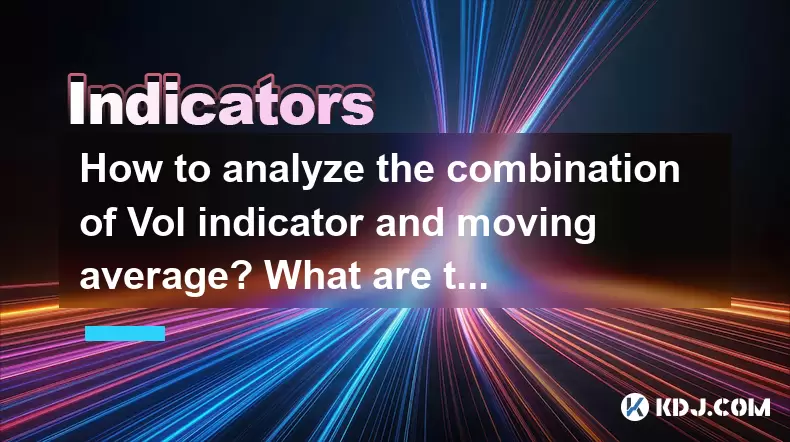
How to Analyze the Combination of Vol Indicator and Moving Average? What Are the Tips?
In the world of cryptocurrency trading, the combination of the Volume (Vol) indicator and moving averages can be a powerful tool for making informed trading decisions. The Vol indicator provides insights into the strength of price movements, while moving averages help to smooth out price data to identify trends over time. When used together, these two tools can offer a more comprehensive view of market dynamics. This article will explore how to analyze the combination of the Vol indicator and moving averages, along with practical tips to enhance your trading strategy.
Understanding the Vol Indicator
The Volume (Vol) indicator is a basic yet crucial tool in technical analysis. It measures the number of shares or contracts traded in a security or market during a given period. In the context of cryptocurrency, it reflects the number of coins traded. High volume often indicates strong interest in the asset, suggesting a potential continuation of the current trend, while low volume might signal a lack of conviction in the market movement.
To effectively use the Vol indicator, traders should pay attention to volume spikes. A volume spike accompanied by a price increase can indicate strong buying pressure, suggesting a bullish trend. Conversely, a volume spike with a price decrease may signal strong selling pressure, indicating a bearish trend. Additionally, divergence between volume and price can be a warning sign. If prices are rising but volume is declining, it might suggest that the upward trend is losing momentum.
Understanding Moving Averages
Moving averages are another essential tool in a trader's arsenal. They help to smooth out price data by creating a constantly updated average price. There are several types of moving averages, but the most commonly used in cryptocurrency trading are the Simple Moving Average (SMA) and the Exponential Moving Average (EMA).
The SMA calculates the average price over a specific number of periods, giving equal weight to each price point. For example, a 50-day SMA would sum up the closing prices of the last 50 days and divide by 50. The EMA, on the other hand, places more weight on recent prices, making it more responsive to new information. Both types of moving averages can help traders identify trends and potential reversal points.
Combining Vol Indicator and Moving Averages
Combining the Vol indicator with moving averages can provide a more nuanced view of market trends. Here’s how to do it effectively:
Identify Trend Direction with Moving Averages: Start by plotting moving averages on your chart. A common strategy is to use a short-term moving average (e.g., 20-day EMA) and a long-term moving average (e.g., 50-day SMA). When the short-term moving average crosses above the long-term moving average, it may signal an uptrend. Conversely, when the short-term moving average crosses below the long-term moving average, it may indicate a downtrend.
Confirm Trends with Volume: Once you have identified a potential trend using moving averages, use the Vol indicator to confirm it. If the price is trending upward and the volume is increasing, it strengthens the bullish case. If the price is trending downward and the volume is increasing, it supports the bearish case.
Watch for Divergence: Pay attention to any divergence between the price and volume. If the price is making new highs but the volume is not keeping pace, it might suggest that the trend is weakening. Similarly, if the price is making new lows but the volume is decreasing, it could indicate that the downtrend is losing steam.
Use Volume to Validate Breakouts: Moving averages can help identify potential breakout points. When the price breaks above or below a moving average, use the Vol indicator to validate the breakout. A breakout accompanied by high volume is more likely to be sustained than one with low volume.
Practical Tips for Using Vol Indicator and Moving Averages
Here are some practical tips to enhance your trading strategy when using the Vol indicator and moving averages:
Choose the Right Time Frame: Depending on your trading style, you might choose different time frames for your moving averages and volume analysis. Short-term traders might use shorter time frames (e.g., 10-day EMA and 20-day SMA), while long-term investors might prefer longer time frames (e.g., 50-day EMA and 200-day SMA).
Combine with Other Indicators: While the Vol indicator and moving averages are powerful tools, they should not be used in isolation. Consider combining them with other technical indicators such as the Relative Strength Index (RSI) or the Moving Average Convergence Divergence (MACD) to get a more comprehensive view of the market.
Backtest Your Strategy: Before implementing your strategy in live trading, backtest it using historical data. This can help you understand how the combination of the Vol indicator and moving averages has performed in the past and refine your approach accordingly.
Stay Flexible: Markets can be unpredictable, and what works today might not work tomorrow. Stay flexible and be willing to adjust your strategy based on changing market conditions.
Applying the Strategy in Cryptocurrency Trading
To apply this strategy in cryptocurrency trading, follow these steps:
Select Your Cryptocurrency: Choose the cryptocurrency you want to analyze. Popular options include Bitcoin (BTC), Ethereum (ETH), and other major altcoins.
Set Up Your Chart: Open your trading platform and set up a chart for the selected cryptocurrency. Ensure that you can plot moving averages and the Vol indicator on the chart.
Plot Moving Averages: Add the short-term and long-term moving averages to your chart. For example, you might use a 20-day EMA and a 50-day SMA.
Analyze Volume: Add the Vol indicator to your chart and observe the volume bars. Look for volume spikes and divergences between volume and price.
Identify Trends and Confirm with Volume: Use the moving averages to identify potential trends. Confirm these trends by checking the volume. For example, if the 20-day EMA crosses above the 50-day SMA and the volume is increasing, it could signal a strong uptrend.
Monitor for Breakouts: Keep an eye on potential breakouts above or below the moving averages. Use the Vol indicator to validate these breakouts. High volume during a breakout increases the likelihood of a sustained move.
Execute Trades: Based on your analysis, execute trades that align with the confirmed trends and breakouts. For example, you might buy if you identify a strong uptrend with increasing volume or sell if you spot a strong downtrend with increasing volume.
Frequently Asked Questions
Q: Can the Vol indicator and moving averages be used for all cryptocurrencies?
A: Yes, the Vol indicator and moving averages can be applied to any cryptocurrency. However, the effectiveness of these tools may vary depending on the liquidity and market dynamics of the specific cryptocurrency. More liquid cryptocurrencies like Bitcoin and Ethereum tend to provide more reliable signals.
Q: How often should I check the Vol indicator and moving averages?
A: The frequency of checking these indicators depends on your trading style. Day traders might check them multiple times throughout the day, while swing traders might review them on a daily or weekly basis. It's important to align the frequency with your trading strategy and time frame.
Q: What should I do if the Vol indicator and moving averages give conflicting signals?
A: If the Vol indicator and moving averages give conflicting signals, it's a good idea to wait for more clarity. You can also consider using additional indicators to help resolve the conflict. For example, if the moving averages suggest an uptrend but the volume is decreasing, you might look at the RSI to see if it supports the uptrend or indicates overbought conditions.
Q: Are there any specific settings for moving averages that work best with the Vol indicator?
A: There are no one-size-fits-all settings for moving averages that work best with the Vol indicator. The choice of moving average periods depends on your trading strategy and the time frame you are analyzing. Common settings include a 20-day EMA and a 50-day SMA for short-term trading, and a 50-day EMA and a 200-day SMA for long-term investing. Experiment with different settings to find what works best for you.
Disclaimer:info@kdj.com
The information provided is not trading advice. kdj.com does not assume any responsibility for any investments made based on the information provided in this article. Cryptocurrencies are highly volatile and it is highly recommended that you invest with caution after thorough research!
If you believe that the content used on this website infringes your copyright, please contact us immediately (info@kdj.com) and we will delete it promptly.
- Bitcoin Price Wobbles: Crash Watch and Key Support Levels
- 2025-06-23 16:25:12
- Navigating the Crypto Seas: Charting a Course Through Bull Runs and Bear Markets
- 2025-06-23 16:25:12
- BNB Price Check: Stablecoin Surge vs. Prediction Rollercoaster
- 2025-06-23 14:25:12
- Metaplanet's Bitcoin Bonanza: Holdings Skyrocket Amidst Market Swings
- 2025-06-23 14:25:12
- Global Meltdown, Investors, and Safe Havens: Navigating the Storm
- 2025-06-23 14:30:12
- NFT Sales Snapshot: Guild of Heroes, Polygon, and the Market's Shifting Sands
- 2025-06-23 15:25:12
Related knowledge

How much volume is required for the W-bottom to break through the neckline of the time-sharing chart?
Jun 23,2025 at 04:21pm
Understanding the W-Bottom Pattern in Cryptocurrency TradingThe W-bottom pattern is a popular technical analysis formation used by traders to identify potential bullish reversals. It typically appears at the end of a downtrend and resembles the letter 'W' on price charts. In the context of cryptocurrency trading, where volatility is high and trends shif...

How to read the sideways consolidation after the bottom volume and long positive line?
Jun 23,2025 at 02:28pm
Understanding the Sideways ConsolidationWhen analyzing cryptocurrency charts, sidewards consolidation refers to a phase where prices move within a narrow range without a clear upward or downward trend. This pattern often appears after significant price movements, such as a sharp increase followed by a period of equilibrium between buyers and sellers. In...
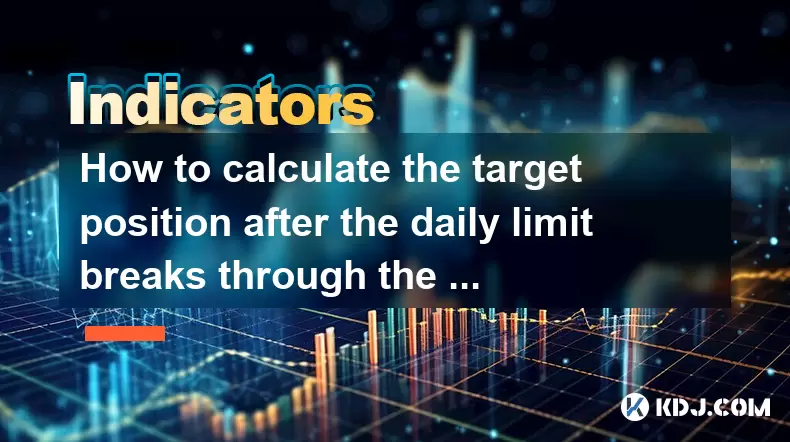
How to calculate the target position after the daily limit breaks through the previous high?
Jun 23,2025 at 02:57pm
Understanding the Daily Limit BreakthroughIn cryptocurrency trading, a daily limit typically refers to the maximum price movement allowed within a single trading day on certain exchanges. When this limit is breached, especially when it surpasses the previous high, traders often seek to calculate the target position or expected price movement following s...
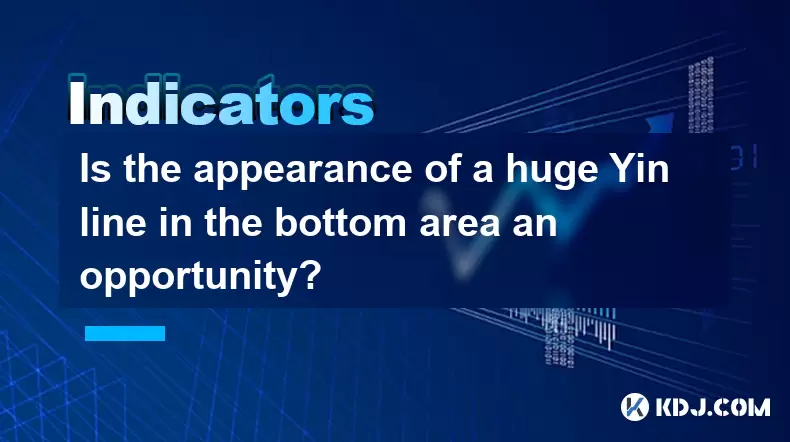
Is the appearance of a huge Yin line in the bottom area an opportunity?
Jun 23,2025 at 04:07pm
Understanding the Meaning of a Huge Yin LineIn technical analysis within the cryptocurrency market, a huge Yin line is often interpreted as a strong bearish signal. It indicates that sellers have dominated the market over a specific period, pushing prices significantly downward. When this occurs in what appears to be a bottom area, traders might questio...
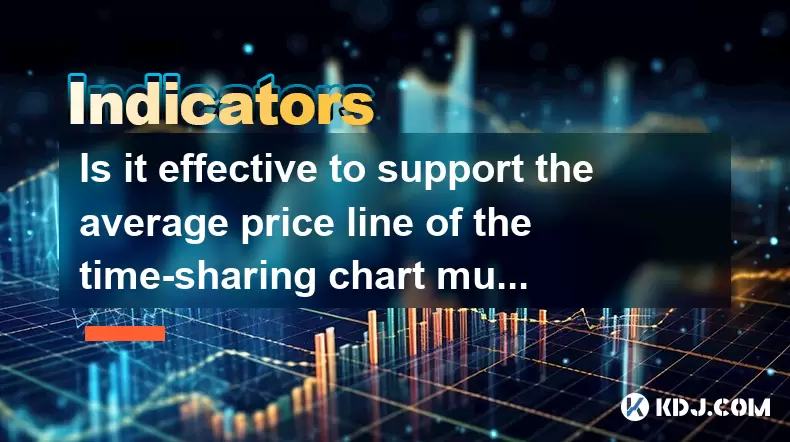
Is it effective to support the average price line of the time-sharing chart multiple times?
Jun 23,2025 at 01:36pm
Understanding the Average Price Line in Time-Sharing ChartsIn cryptocurrency trading, time-sharing charts refer to real-time price charts that display price movements over short intervals, often within a single trading day. Within these charts, the average price line, also known as the Volume Weighted Average Price (VWAP), is a commonly used technical i...
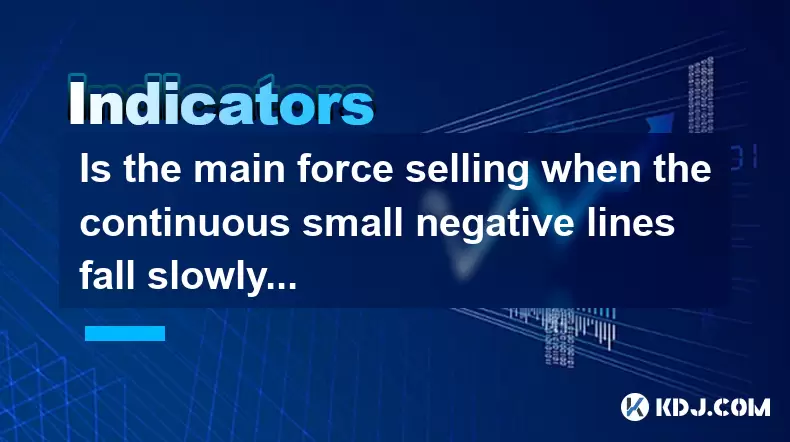
Is the main force selling when the continuous small negative lines fall slowly?
Jun 23,2025 at 03:35pm
Understanding Continuous Small Negative Lines in Cryptocurrency ChartsIn cryptocurrency trading, continuous small negative lines refer to a pattern where the price of an asset declines gradually over time with small bearish candlesticks. These candlesticks typically have short bodies and may or may not have wicks. This pattern often appears during perio...

How much volume is required for the W-bottom to break through the neckline of the time-sharing chart?
Jun 23,2025 at 04:21pm
Understanding the W-Bottom Pattern in Cryptocurrency TradingThe W-bottom pattern is a popular technical analysis formation used by traders to identify potential bullish reversals. It typically appears at the end of a downtrend and resembles the letter 'W' on price charts. In the context of cryptocurrency trading, where volatility is high and trends shif...

How to read the sideways consolidation after the bottom volume and long positive line?
Jun 23,2025 at 02:28pm
Understanding the Sideways ConsolidationWhen analyzing cryptocurrency charts, sidewards consolidation refers to a phase where prices move within a narrow range without a clear upward or downward trend. This pattern often appears after significant price movements, such as a sharp increase followed by a period of equilibrium between buyers and sellers. In...

How to calculate the target position after the daily limit breaks through the previous high?
Jun 23,2025 at 02:57pm
Understanding the Daily Limit BreakthroughIn cryptocurrency trading, a daily limit typically refers to the maximum price movement allowed within a single trading day on certain exchanges. When this limit is breached, especially when it surpasses the previous high, traders often seek to calculate the target position or expected price movement following s...

Is the appearance of a huge Yin line in the bottom area an opportunity?
Jun 23,2025 at 04:07pm
Understanding the Meaning of a Huge Yin LineIn technical analysis within the cryptocurrency market, a huge Yin line is often interpreted as a strong bearish signal. It indicates that sellers have dominated the market over a specific period, pushing prices significantly downward. When this occurs in what appears to be a bottom area, traders might questio...

Is it effective to support the average price line of the time-sharing chart multiple times?
Jun 23,2025 at 01:36pm
Understanding the Average Price Line in Time-Sharing ChartsIn cryptocurrency trading, time-sharing charts refer to real-time price charts that display price movements over short intervals, often within a single trading day. Within these charts, the average price line, also known as the Volume Weighted Average Price (VWAP), is a commonly used technical i...

Is the main force selling when the continuous small negative lines fall slowly?
Jun 23,2025 at 03:35pm
Understanding Continuous Small Negative Lines in Cryptocurrency ChartsIn cryptocurrency trading, continuous small negative lines refer to a pattern where the price of an asset declines gradually over time with small bearish candlesticks. These candlesticks typically have short bodies and may or may not have wicks. This pattern often appears during perio...
See all articles
























































































